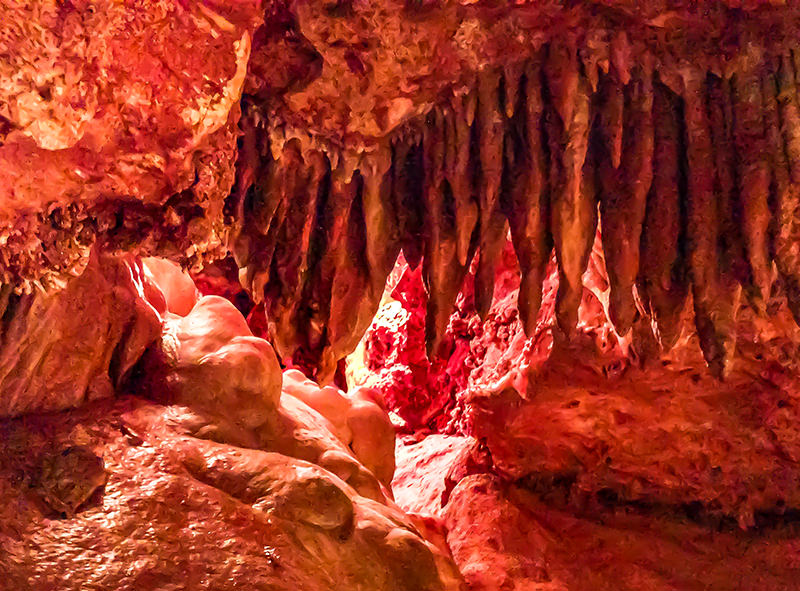
The cave of Saint-Cézaire was discovered on June 16, 1890 by a farmer who discovered a hole while clearing his field. While digging, a deep hole appeared. Stairs were installed to later open the cave to visitors. In 1920, the film Phroso by Charles Vanel, which was filmed mainly in this cave, contributes to its fame. The lighting with powerful projectors shows the transparency of the crystals. For 6 years the cave was closed when it was reopened in 1946 to the delight of visitors who appreciate this unique place in the Maritime Alps.

The cave of Saint Cézaire is not far from Grasse and near the village of the same name. We leave Grasse, and follow the route to St. Cézaire sur Siagne and Cabris. Then we follow the signs to Saint Cézaire and not the indications of the navi. In the karst cave we are then overwhelmed by a veritable flood of extraordinary formations. Inside the cave we enter several rooms connected by narrow passages. The reddish hue of iron oxide dominates the colors, creating a wonderfully warm atmosphere.

We cross the skeleton of the cave and listen to the sound of the "cave organ", which consists of numerous stalactites and produces very clear, pure sounds when struck. It will not be boring, especially the children will have a lot of fun. The tour does not require any special physical fitness. There are only a few stairs, and they are very particularly steep. At the end of the tour we pass the so-called abyss. Only a few meters are visible, then it fades picturesquely illuminated in the karst crevices.


